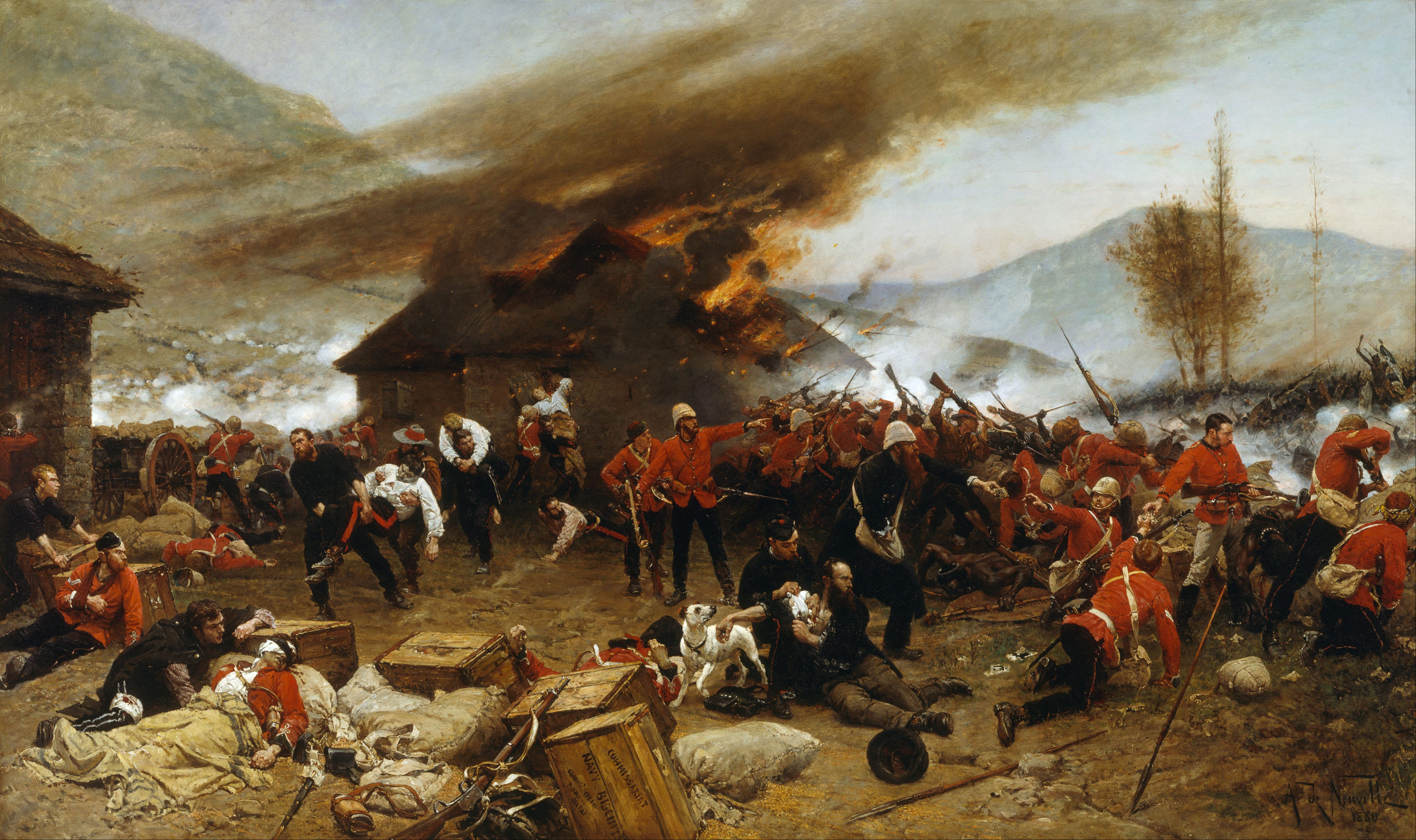Explanation:
A last stand is a military situation in which troops hold their position against overwhelming odds. They can be categorized as such in accordance to the tactical significance they can bring to the battle or war. They can be the last resort in buying time for the fleeing troops or civilians. They can be a stand for defending a leader who holds significance to their cause. Or they can be a defense their position because it is a tactically crucial choke point and preventing the enemy from utilizing it. Nevertheless, the most famous reason for withstanding their ground is, perhaps, the fear of execution. Seeing it as their duty to fall in battle like their fellow soldiers, the troops choose to fight to the last man standing as a mark of honor. Another reason for that would be not only to prevent the enemy from capturing them, but also to prevent giving out crucial information to the enemy in case torturing occurs.
1) Battle of Thermopylae:
Among the most famous, a definite fan-favorite is the Battle of Thermopylae. Allied Greek city states withheld the strategic choke point of Thermopylae pass, which prevented further advancement for the Persians. They withstood the attacks of the Persians three excruciating and costly days in a row, until they finally gave way on the third day Greek forces fell in combat after fighting to the very last man standing. It was a costly battle for both sides, more so for the Persians by the estimates, as it put a halt in their advance

2) Battle of Rorke’s Drift:
A battle fought in Rourke’s outpost that built upon an important crossroad and was a part of the Anglo-Zulu war. The massacre at Isandlwana had confirmed that amassing army of Zulu warriors set upon the warpath to reclaim their lost territories to the British. The fortified outpost had withheld the line even though it was outnumbered 10:1. The British repelled each and every attack made by the Zulu. In the end, the British triumphed over the Zulu with only 17 people killed, and 15 wounded, as compared to estimated 1000 people the Zulu los. This had marked the beginning of the end of the Zulu Kingdom.


3) Battle of Little Bighorn
As part of the Great Sioux War, General Armstrong Custer met his demise near the Little Bighorn River. The battle was named after the river later on. The encampment made by the 7th cavalry and led by General Custer was surrounded on all sides by native braves and pelted with a never ending volley of arrows. The troops were led by Chief Gall, after receiving a vision by the legendary Sitting Bull, assuring Gall of his victory. Indeed, the natives did score a big victory over the Americans, as they managed to destroy half of the 7th cavalry division, kill General Custer and put a halt on the encroaching American army.


4) Battle of the Alamo:
Under the leadership of general Santa Anna, the Mexican army marched forth in an attempt to reclaim lost territories and return Texas to their rule. Yet the Texan rebels were persistent and would not let go of the hope of becoming independent. The culmination of the war against the rebels came at the Spanish mission that held 182 Texan rebels. Here they repelled the Mexican army for 12 days. After enduring constant attacks and endless bombardment of the well-equipped Mexican army, the poorly equipped Texan rebels were inevitably subjected to a slaughter. On the dawn of the thirteenth day, Alamo fell under the rule of Mexico City. This iconic battle paved the way for fresh sympathizers to join the rebel’s cause and fight against the rule of Mexico City. Soon after, the rebels would manage to achieve independence and join the United States of America.


5) Battle of Camaron:
The French Foreign Legion received much prestige and fame for its role in the Battle of Cameron. During the rule of Napoleon III as part of the Second French intervention in Mexico, the Legion was ordered to escort a convoy that was suspected to be attacked by the Mexican Army. Resting at a local Hacienda by the name of Camaron, 250 Mexican rancheros were spotted patrolling the road. They saw the equipment in front of the hacienda, they decided to attack the French Foreign Legion. Numbering only 62 legionnaires led by Captain Jean Danjou, the Legion repelled the rancheros and forced them to call for backup. They fought the entire day and night. The Legion fought like devils, repelling the amassed Mexican army of 800 cavalry and 2200 infantry, however, despite the heavy casualties they afflicted to the Mexican army, it was not enough to bring victory. Only 5 were left, and after a final bayonet charge in an effort to join their brothers in arms, only 3 survived. Seeing the spirit with which they fought, Major Compos of the Mexican army listened to the demands of the Legion. He ordered retrieval of their battle standard, their weapons and their leader – Captain Jean Danjou. Thus was born the legend of the French Foreign Legion that is so highly respected to this day.

